After years spent exploring Baja California’s Bahía Magdalena in MADRINA, my 19′ 6″ Iain Oughtred Sooty Tern—an ideal boat for the job—I was beginning to feel my advancing age. It wasn’t only the sore muscles and creaking joints as I settled onto the floorboards, squeezed in next to the centerboard trunk for another long night of intermittent sleep; nor the dampness inside my cockpit tent, nor another meal cooked on a stove set on those same floorboards between my upraised knees. No, the larger question that returned whenever I thought about replacing MADRINA with something a wee bit more comfortable, and thus more substantial, was simply: If I’m ever going to tackle a bigger boat project, hadn’t I better begin now rather than later?From the moment I opened my copy of Plans & Dreams Vol. 1, Paul Gartside’s first collection of plans and invaluable essays originally published in Water Craft magazine, I was taken by the 19′ 9 3⁄4″ centerboard lugger, his Design #166. I was particularly drawn to the simple standing lug, a rig with which I was already familiar, and imagined the design approaching that sweet spot between size, seaworthiness, and ease of handling. Also, having already built Gartside’s Design #130, a 12′ dinghy, I remembered the wealth of detail included in his plans, the breadth of classic, old-school building techniques they revealed, and that Gartside himself had been always quick to respond to questions. Out of the water the sweet lines of Gartside's design are clearly visible: the fine entry and aft skeg enhance performance both under sail and when rowed; the gently curved sheerline complements the sloping cabintop. For trailering, the boom crutch—used to support the main boom when at anchor—is moved aft to stand in the mizzen maststep to support the head of the mast. Scott Sadil
Scott Sadil
Join The Conversation
We welcome your comments about this article. To include a photo with your remarks, click Choose File below the Comment box.

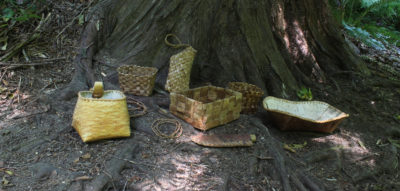
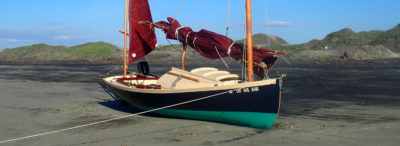

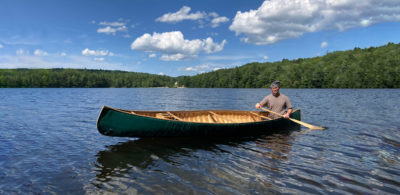

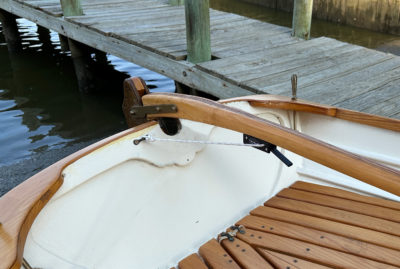
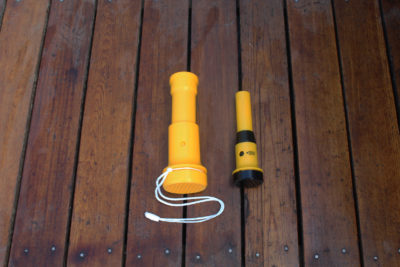
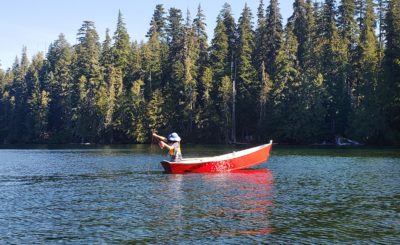
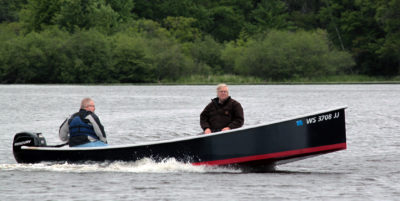
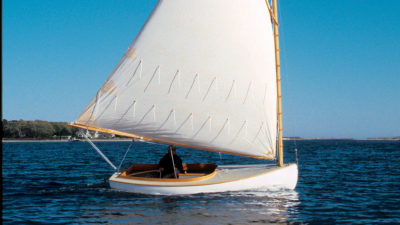
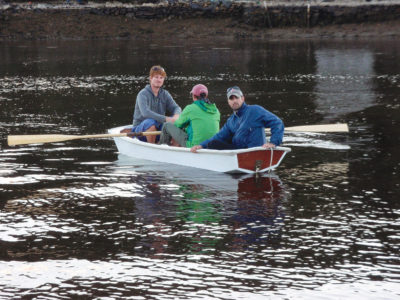
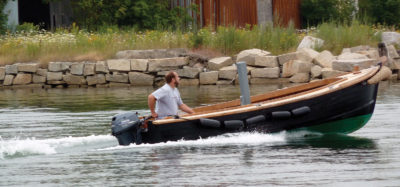
What a beautiful little vessel. I love the plumb bow look, the fine entry and sweeping sheer line. Great choice of colours. Paul is doing a small stich-and-glue catboat for me now. Can’t wait to receive the plans.
This boat has been on my long list of designs to build for a while. I have trawled the internet trying to find examples that have been built with very little success. It is great to see a full write up of this build. It looks wonderful. Congratulations to the designer and the builder.
David
I am a newbie and need coaching. Is this a standing lug or a balanced lug rig?
That’s a balance lug rig. It has a boom that extends the forward lower corner of the sail—the tack—forward of the mast. A standing lug rig, with or without a boom, has the tack set at the mast.
—Ed.
Wonderful build story and review of the boat. It does indeed look sweet and appears to have that nice mix of stability and slipperiness. In many ways it kind of reminds me of Phil Bolger’s Chebacco. With very similar dimensions and a slightly different rig. Had you considered it as well ?
The Bolger design, as much as I, personally, love it, is subject to a significant flaw, in that it is unrecoverable from a capsize without major assistance. This was displayed during a test at the Port Townsend Wooden Boat Festival, some years ago, and is, I believe, documented in a YouTube video.
I have slightly bigger Gartside boat, 21’ – no cuddy, but I have a tent, mainly to keep rainwater out but there is enough space for sleeping. Boat is gaff rigged with headsail and topsail, it sails sprightly and can take some wind without reefing – I try to avoid weather that reduces the fun of sailing…
I have made some videos at youtube channel “Seppo E,” some daysails and one overnight, and some work that I‘ve done during winter.
Beautiful! Someone ought to produce them in fiberglass.
Love your article, and the boat is truly beautiful. I built Paul Gartside’s Loopen a couple of years ago, using the cold molded method. You are too modest. It was the most difficult and time-consuming project I had done to date, and I had built five boats prior.
Dave Johnson
Nice! How easy is it to work at the mast (i.e., in raising, lowering and adjusting that big lug sail), given the cabin trunk blocking access?
Is Paul Gartside is still in favour of traditional lofting? For 30 years computer software has been available enabling hull drawings to be faired to such an extent that NO fairing of the shadow moulds is needed (provided the set-up is accurate), and millimetre-perfect drawings of apron, transom, and any bulkheads/floors (fore and aft faces) can easily be generated and printed full size. Such software has the benefit of enabling good design of buoyancy tanks, and of course checking static hydrostatics and righting curves. This article, “Strange and CAD, may be of interest to readers.
This deserves to be built often and to be seen sailing the worlds many lakes and rivers.